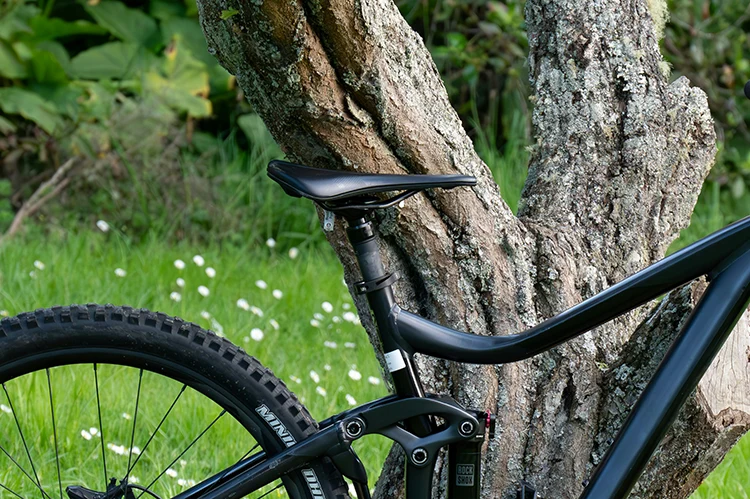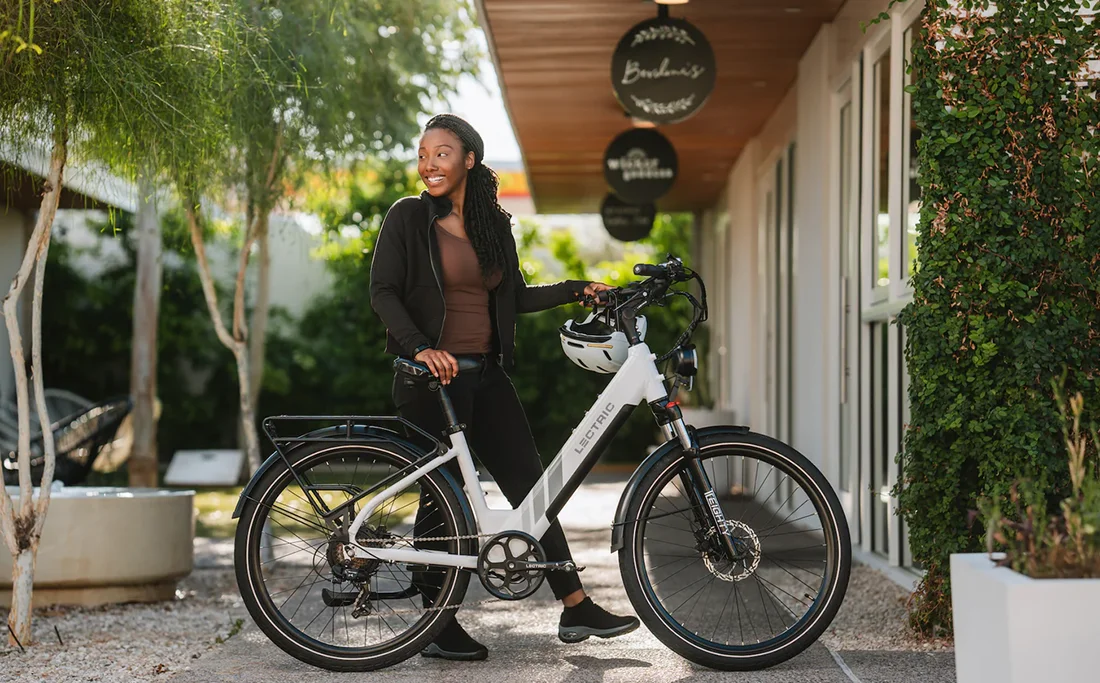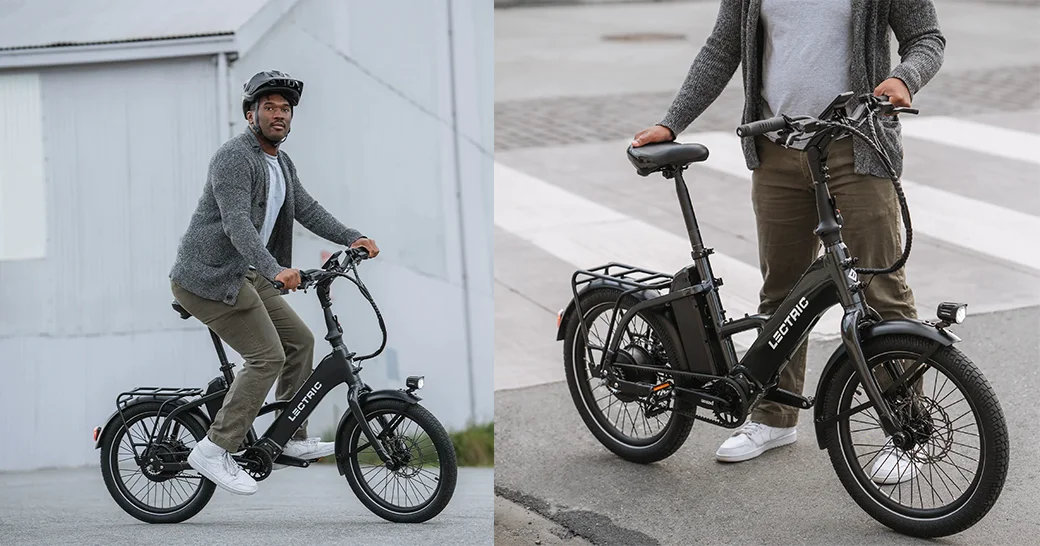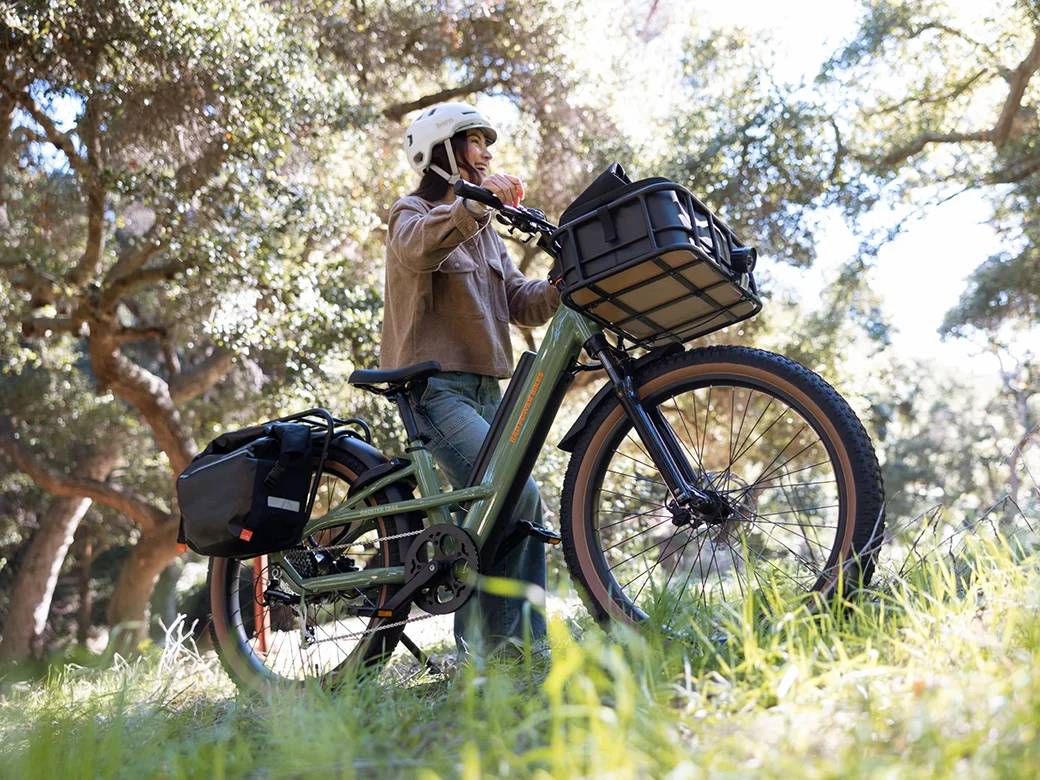If you’ve never seen a dropper post before, it can look quite unnerving. And if you’ve never ridden with a dropper post before, the first moment that you click its button can be completely jarring. Suddenly the seat has disappeared – seemingly – from your backside, and you are left floating over the frame as you traverse a tricky descent.
Part of Cycling Advice
Dropper posts are incredibly unique in that they fit into a small but important niche in cycling.
While disc brakes have transcended disciplines from the mountain biking world to road cycling, gravel riding, cyclocross, and more, dropped posts have remained distinct to mountain bikes.
Let’s dive into one of the most important and valuable additions to the history of mountain bike technology.
The device that has changed the way that riders attack descents, downhills, and the most technical terrain. These are dropper posts.
Contents
Introduction to Dropper Posts

A dropper post is an adjustable seatpost that can be raised or lowered with the push of a button. As of now, the adjustment of a dropper post remains one-dimensional, in that it either moves up or down.
With the moving of the seatpost comes the movement of the saddle, which can be raised into the normal riding position, or lowered for steep and technical terrain. Dropper posts have changed the potential of mountain bikes.
We used to be limited in the abilities of our mountain bikes based on the frame, suspension, and tires.
Without the movement of the saddle or seatpost, we couldn’t tackle steep descents on a bike that was also made for endurance mountain biking, comfortable rides, and efficient handling.
The introduction of the mountain bike dropper post changed everything. Now, we have bikes that are more capable than ever. All the diverse functions of all-terrain mountain bikes, plus the comfort of a dropper post.
What Dropper Posts Do?
Dropper posts raise or lower the seatpost – and therefore the saddle – during a mountain bike ride. You don’t even need to stop pedaling.
Dropper posts are controlled by a button or lever usually attached to the handlebars.
At the flip of a switch, you can adjust the height of your seatpost to match the terrain.
For flat and less technical routes, dropper posts allow you to raise your seatpost all the way back to its maximum height for efficient riding.
Related: Mountain Bike Size Chart
For steep and technical terrain, dropper posts allow you to lower your seatpost. That allows you more room to move your body over and around the bike.
How Do Dropper Posts Work?
You can raise or lower your dropper post with a click of a button or a pull on a lever. The natural position for a dropper post is at its highest, in the normal riding position. This is the correct saddle height for the most comfortable and efficient pedaling.
When lowering the seatpost, you simply push the button or lever and put your bodyweight on the saddle.
This pressure will help lower the seatpost out of your way as you approach technical terrain.
Dropper posts work like an office chair in this sense. All you have to do is pull the lever and let your bodyweight combine with gravity to lower your seat.
Another important point is that most seatposts can be lowered to any position.
Related: Best Dropper Posts
It is not necessarily all the way up or all the way down. This provides a theoretically infinite number of saddle positions to use with a dropper post. That will come in handy for all sorts of riding.
Some seatposts come with a number of fixed positions, from 2 all the way up to 10. This style is less common as it is much more limiting and can be clunky to use.
For the steepest and most technical descents, you want your dropper post as low as possible so that you can move your body down and back to maintain your center of gravity.
But let’s say that you’re riding on a relatively flat but technical trail that still requires some pedaling but is also filling with small rock gardens.
In this scenario, you can lower your seatpost significantly. This allows you to keep pedaling from a relatively comfortable and powerful saddle height. At the same time, it’s giving you more freedom of movement around the seatpost.
Internal
If you were to look inside of a dropper post, you’d find a complicated network of inner workings that make this simple process possible.
To summarize, a dropper post is typically filled with pressurized gas or air. The air is held or released using the button or lever controlling the dropper post.
Original dropper posts housed the up/down lever at the post itself, but that was a crucial design flaw.
Dropper posts are used for steep and technical terrain. If you have to take one hand off the handlebars in order to adjust the seatpost, you are basically defeating the purpose of a device meant to improve bike handling.
Thankfully, the design of dropper posts has quickly evolved. Most modern dropper posts are controlled by an external lever mounted on the handlebars.
Like disc brakes, dropper posts can be either mechanical or hydraulic. They typically have cables that run from the handlebars along the shaft of the seatpost, or at the base of the seatpost.
Terminology
For the purposes of this article, we will spare the extreme detailing that goes into manufacturing dropper posts. However, there are a few terms that you should understand before shopping for a dropper post.
Overall length, travel, and diameter will give you the full range of function for a dropper post. They’ll also tell you what bikes and frame size it is compatible with.
Dropper posts are typically available in a few different travel lengths. It refers to the distance into the seatpost that the saddle can be lowered: 80mm, 100mm, 125mm, and 150mm.
External routing and internal routing refer to where the cable is mounted. It connects the dropper post to its controlling lever. Externally routed cables attach to the outside of the seatpost. Internally routed cables attach to the inside of the seatpost, typically through its base.
The button or lever used to control the dropper post is often referred to as the ‘trigger’. Most riders prefer their trigger mounted on the handlebars, usually close to the brakes for easy functioning.
There are a few different ways to mount your trigger. The most popular are vertical, horizontal above the bar, and horizontal below the bar.
Horizontal above the bar is most often used for 2X mountain bikes – that is, mountain bikes with two front chainrings – as the front derailleur shifter is usually located under the handlebar and controlled by the rider’s thumb.
As you could probably guess, horizontal below the bar trigger mounting is used for 1X mountain bikes. The trigger takes the place of the front derailleur shifter.
Why You Should Ride with a Dropper Post?
A dropper post allows you to lower the seatpost and move it out of your way. It enables better handling and movement of your center of gravity.
Especially on steep descents, the most stable position is to move your body backward with your bike out in front of you. This helps keep your weight off the front wheel, which would send you tumbling over the handlebars on steep terrain.
With a normal seatpost, it is difficult, awkward, and uncomfortable to try and put your bodyweight behind the saddle on a steep descent. But with a dropper post, you can have much greater freedom of movement.
There’s no need to worry about knocking your saddle or getting caught on it as you return to a central riding position.
Dropper posts don’t just come in handy on steep downhills either. They are also ideal for carving corners and bumpy terrain which requires you to shift your center of gravity.
More advanced mountain bike riders will know the feeling of diving into corners and leaning the bike over much more than their body.
Having a seatpost in the way could severely limit your ability to corner comfortably and efficiently. It can cause you to lose time on descents and struggle to handle your bike.
Interested in more mountain bike topics? See our MTB Section.
FAQ
What is a dropper post for?
A dropper post allows you to lower your saddle out of the way for steep descents and technical mountain bike riding. Mountain bike dropper posts allow the rider to raise and lower their seat using a lever mounted at their handlebars, which allows complete freedom of movement over the saddle on steep or bumpy terrain.
Do you really need a dropper post?
Dropper posts have fundamentally changed the way that mountain bikers ride, handle, and descend on their mountain bikes. You can get by without them, but you can also get by on a mountain bike without disc brakes, using rim brakes instead.
While you don’t necessarily need them, they make mountain bike riding significantly, more fun, comfortable, and efficient.
If you’re interested in testing the limits and seeing how fast you can go on a mountain bike, a dropper post is a must. You’ll never handle it the same way without it.
Why are dropper posts so expensive?
Dropper posts are a relatively new and complicated technology that houses a lot more than it looks from the outside. Like disc brakes, dropper posts contain a complex array of cables, fluid, and pistons that raise and lower the seatpost at the push of a button.
Even in mechanical dropper posts which use braided steel cables to connect the trigger with the dropper post, the dropper post itself is a complicated and lightweight device containing pressurized air that is designed for the very best in function and performance.
While mechanical dropper posts are typically less expensive than hydraulic dropper posts, they are equally as complicated and difficult to manufacture, especially in such a tight space under the saddle.
Can you put a dropper post on a hardtail?
A dropped post can be added to any style of a mountain bike, whether it is a hardtail, full suspension, or downhill bike.
Arguably, a mountain bike dropper post is even more effective on a hardtail mountain bike because it lacks rear suspension, which means the bike’s backend could buck and be kicked up more on bumpy or technical terrain.
How does a dropper seat work?
A dropper seat, or dropper post, works like an office chair. It raises and lowers at the pull of a lever. A mountain bike dropper post will naturally raise at the pull of the lever but will lower when the lever is pulled whilst the rider’s weight is being pushed down on the saddle.
Here’s how to use it: sit in the saddle and pull the dropper post lever (i.e. trigger) to lower the seatpost, and then stand on the pedals and pull the lever to raise the seatpost.






